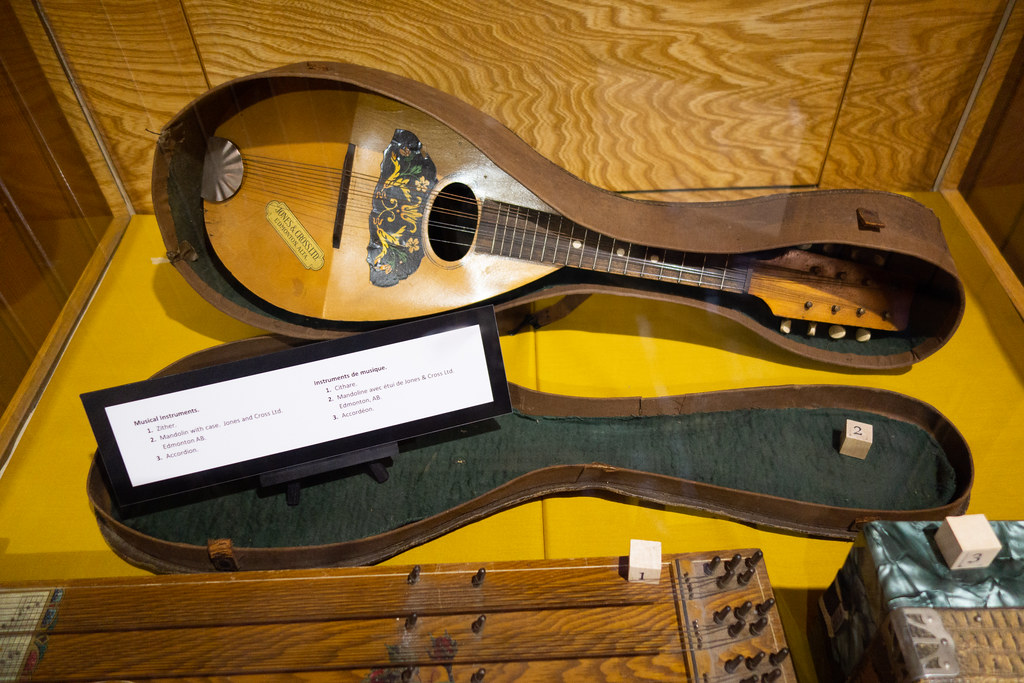Did you know that New York has a Mandolin Orchestra?
The little-known ensemble turns 100 next month, and for a century it has been bringing music lovers together.
The mandolin is not readily associated with New York. Its distinct pear-shaped body and rich, plucky sound is a staple in Neapolitan music. Indeed, you could say that it’s part of the stereotype representing Southern Italy.
A modern member of the lute family, dating back to Italy in the 18th century, the mandolin is especially known for its role in traditional folk tunes and serenades, often painting pictures of quaint Italian streets and lively festivals. With its eight strings and light, wooden frame, the Neapolitan mandolin is not just an instrument; it’s a cultural icon that continues to strum the melodies of Italy’s soul.
But it turns out that this stereotype is quite wrong. With its complicated history of evolution and geographical expansion, the modern mandolin is also very popular in Eastern Europe, and it’s been part of the New York musical scene for 100 years via its Eastern European Jewish immigrants.
“I think this is an extraordinary moment for us as an organization,” says Carol Bloom, 80, a retired teacher and guidance counselor from the Upper West Side who plays second mandolin in the orchestra.
The spirited group, made up of a mix of professional and amateur musicians, gather to rehearse once a week and hone their craft while practicing songs like “Ukrainian Melody,” “Bulgar,” and “Flatbush Waltz.”
Founded in 1924, and originally called the New York Freiheit Mandolin Orchestra, after its affiliation with the Jewish community newspaper Freiheit, the NY Mandolin Orchestra’s founding members were Eastern European immigrants who had lovingly brought their instruments on their journeys to the New World.
“The orchestra really had a very strong influence from Eastern European immigrants, and largely a Jewish influence, too,” said Judith Fallat, 67, a full-time attorney from Morris Plains, NJ and the group’s concertmaster.
“If you think back to 100 years, these people are working in factories,” said Fallat, who joined the orchestra in 1997. “They get off work and blow off steam, and gather and play the music of their homelands and dance and be together. That’s what they would do at night.”
Today the orchestra’s membership runs the gamut of backgrounds, with members from all five boroughs of New York, as well as Nassau, Orange, Duchess and Rockland Counties, and all over New Jersey.

Its members represent a cross section not only of the musical community but of the mainstream as well: composers, lawyers and doctors, as well as school teachers and painters. What most of them have in common is their age group, nearly all at or near retirement age.
In the 1920s, the Big Apple could claim numerous mandolin orchestras, many affiliated with labor unions, including the International Ladies Garment Workers Union Orchestra, the International Workers Order Mandolin Orchestra and the Jewish Peoples’ Fraternal Order Orchestra.
Over the decades, most of them dwindled, but the NY Mandolin Orchestra is still thriving, and is today one of the oldest continuously performing mandolin orchestras in the country.
“Like any organism, it’s gone through its changes. It’s certainly not what it was 100 years ago. It’s evolved over the years,” said Bloom, who joined the group nearly a decade ago.
“But somehow it’s still the orchestra, the New York Mandolin Orchestra.”
The orchestra’s conductor is Dr. Yuanlin Chen, 67, a renowned composer from Kew Gardens Hills whose works have been performed at major concerts around the world.
He described the group as “wonderful” and hailed their stylistic evolution over its 100-year history.
“I enjoy it. It’s very exciting working with the musicians.”
The Mandolin Orchestra’s centennial concert will be on Sunday April 28, 2024 at 2:00 PM at The Church of the Holy Trinity, 316 East 88th Street. New York, N.Y. Entry is FREE.
Doors open at 1:30











